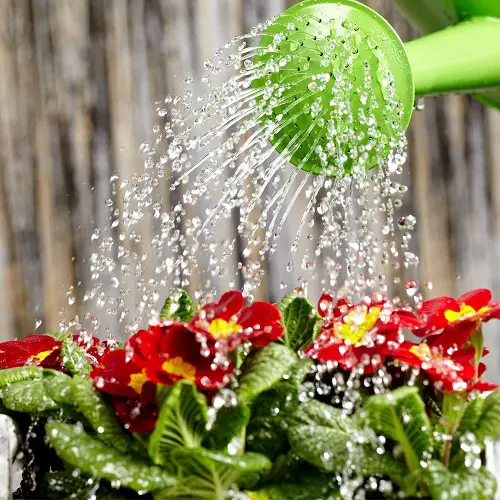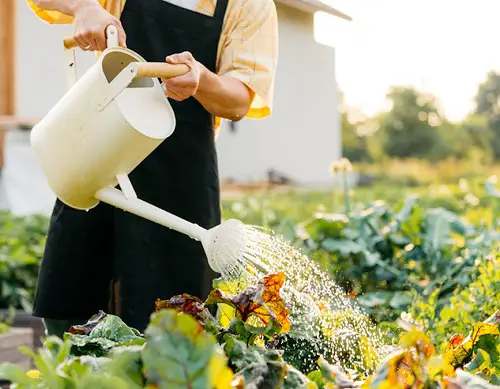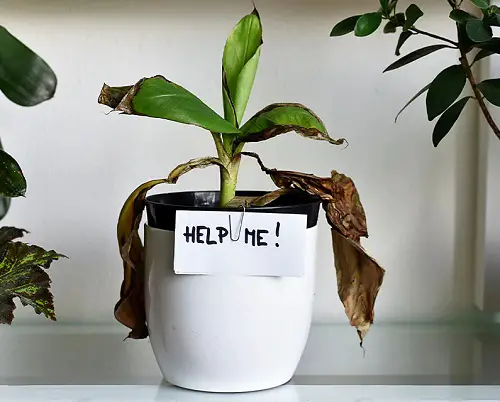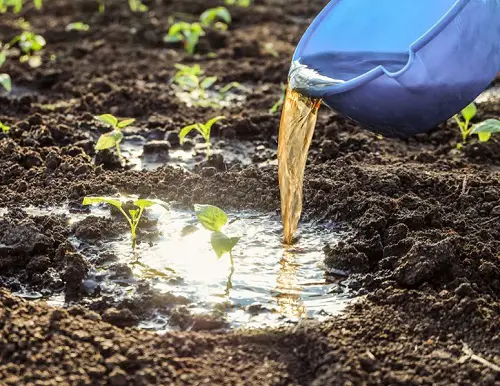Do you know that there are Times When You Should Not Water Plants? And if you do, it can be detrimental!
While you can water plants when you are comfortable to do that, there are times when doing that can have a significant impact on their health and growth. For example, in the evening when the weather is either cold or humid. Find 13 more occasions when you should not do that below!
Times When You Should Not Water Plants
1. During the Afternoon or Midday
If you live in a warm climate and it’s summer, what’s the point of watering the plants in the peak afternoon, right? Before the water can penetrate into the soil, it will evaporate!
Also, the droplets of water on the foliage may act as magnifying glasses, increasing the intensity of sunlight, which can cause a thermal shock to the plants and burn the leaves.
2. By Late Evening or Nighttime
If you live in a cold or humid climate, watering the plants at this time can bring diseases as the excess water on the leaves will not get the chance to evaporate, and that can lead to a thriving environment for fungal infections, increasing molds, and mildew growth.
3. Directly After Transplanting
Certain plants like native wildflowers, shrubs, and trees with deep root systems, drought-tolerant plants like portulaca and lantana, and Mediterranean herbs like rosemary and lavender must not be watered frequently after transplanting. These plants prefer a deep and thorough watering but infrequently after growing medium becomes a bit dry.
4. When it is Cloudy or Raining
Do we even have to mention it? Obviously, right? Who would want to soak an already soaked plant more and invite all the negatives associated with overwatering?
5. Without Checking the Topsoil
You must have seen this point in every piece of writing we do, and we just couldn’t stress it enough! It is important to let the topsoil go a little dry before you reach for the can again to moisten the growing medium.
Frequent shallow watering may also lead to shallow root systems in the plants, making them less drought-tolerant too.
6. When the Plant is Dormant
Come change in the season, especially the colder months and winter, and you will see many plants going into inactive dormant state. If your plant is one of them, at this stage, their water requirements decrease significantly, and watering them at this point will surely kill them!
7. When You See the Signs of Overwatering in Plants
Well, of course! Yellowing or drooping leaves, a spongy/mushy feel near the base of the plant or foliage, and an overall lack of growth and vigor—all these are telltale signs saying—keep that watering can away!
8. When it is Too Windy Outside
If you are planning to water the garden plants and see the gush of wind happening, well, stop! The water from the pipe will go everywhere, and some parts will get more moistened than others.
It will also make the foliage wet. Winds will also dry up the water quicker, rendering the entire meaning useless.
9. When You See Hard Water Spots on the Leaves
White or watery spots on the leaves are sure-shot signs of hard water (The white crust on the topsoil indicates calcium buildup as well, so look for it), and if you continue to moisten the growing irrigate with that water again and again, you’ll see less productive and vigorous plants.
If that is happening, get a soft water treatment system or RO or rainwater.
10. During a Heatwave in the Area
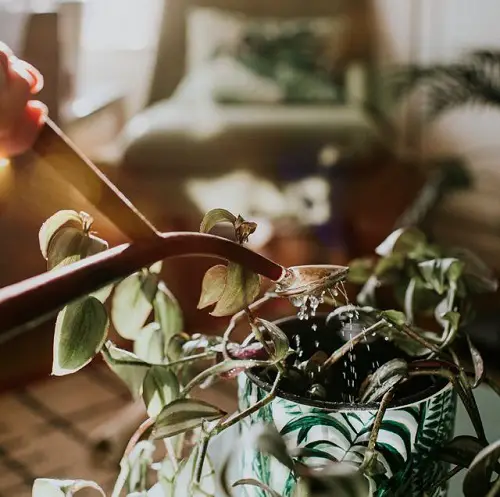
If you live in USDA Zones 8-11, beware during the time of heatwave, do not water the plants at peak temperature, thinking it will help them. During extreme heat and temperatures, plants gets stressed and change their watering requirement habits.
Let the heatwave pass, then water the plants deeply to encourage deeper and more robust root growth. During these times, the best time to water is early morning.
11. When the Plant is Growing in a Poor Drainage Area
If you spot a plant growing in an area with poor soil drainage, near a pond, or a spot that may reduce the flow of water or get frequent water splashes from a fountain, be careful with watering.
Consider watering less frequently, relocating the plant in such a situation, or improving the soil structure!
12. In Freezing Temperatures
Planning to water the plant when it is freezing outside? Stop! It will jam up the roots, as the water will soon convert into ice after seeping deep into the rooting system, eliminating the plant to update air and nutrients.
13. If You have Fertilized the Plant Using a Liquid Feed
Pre-watering the soil before feeding with liquid fertilizers hydrates the growing medium sufficiently and prepares the plant for better nutrient absorption. Post-watering can reduce the effect and absorption by roots, which is why you should wait 12-24 hours after fertilizing with liquid feed.
14. Succulents and Cacti that are Propagating
What do we all know about succulents? That they store water in their leaves, stems, and roots!
So, a cutting of the succulent or cacti has enough water to sustain itself for a few days, and watering it during propagation and keeping the soil wet will increase the risk of root rot.


